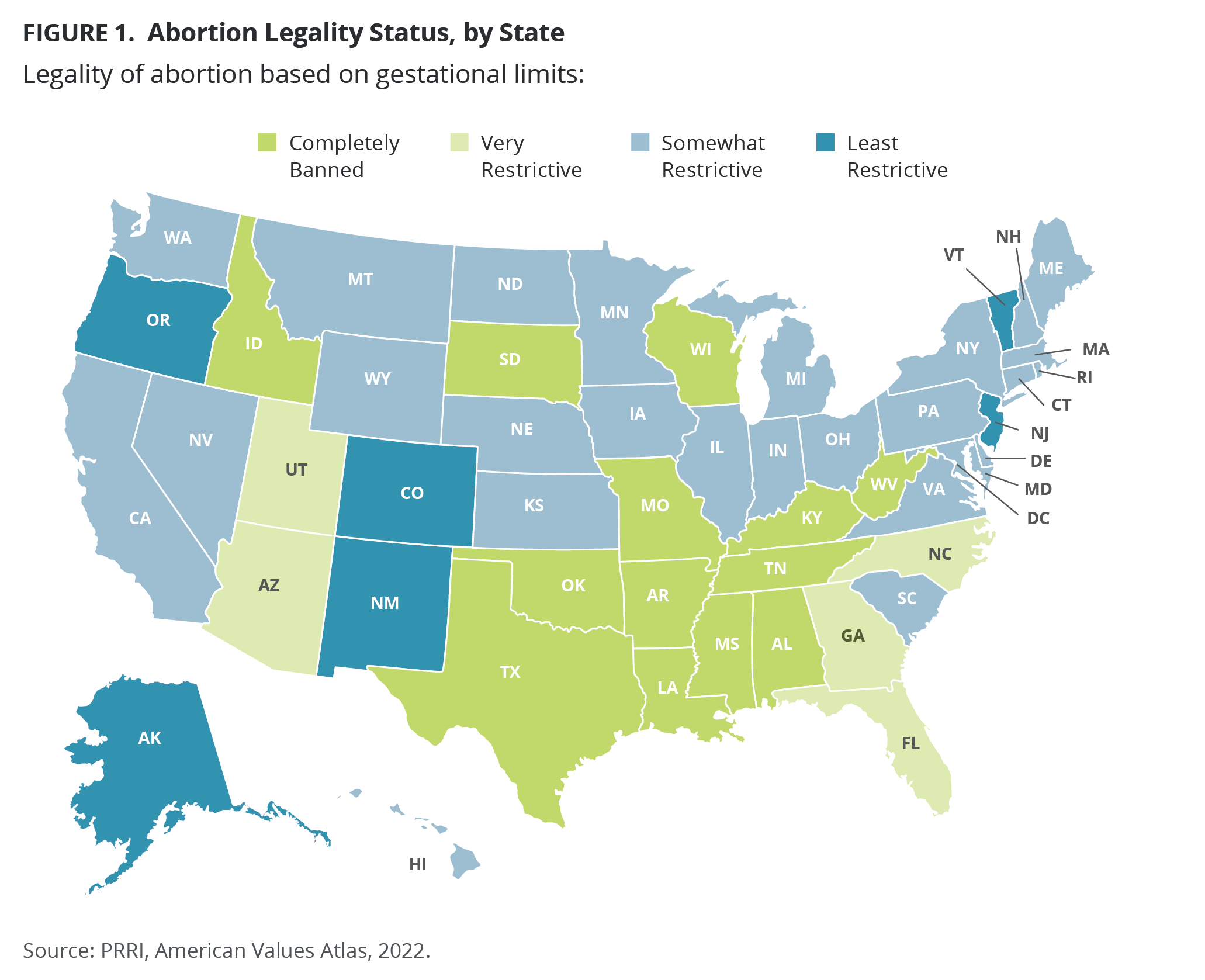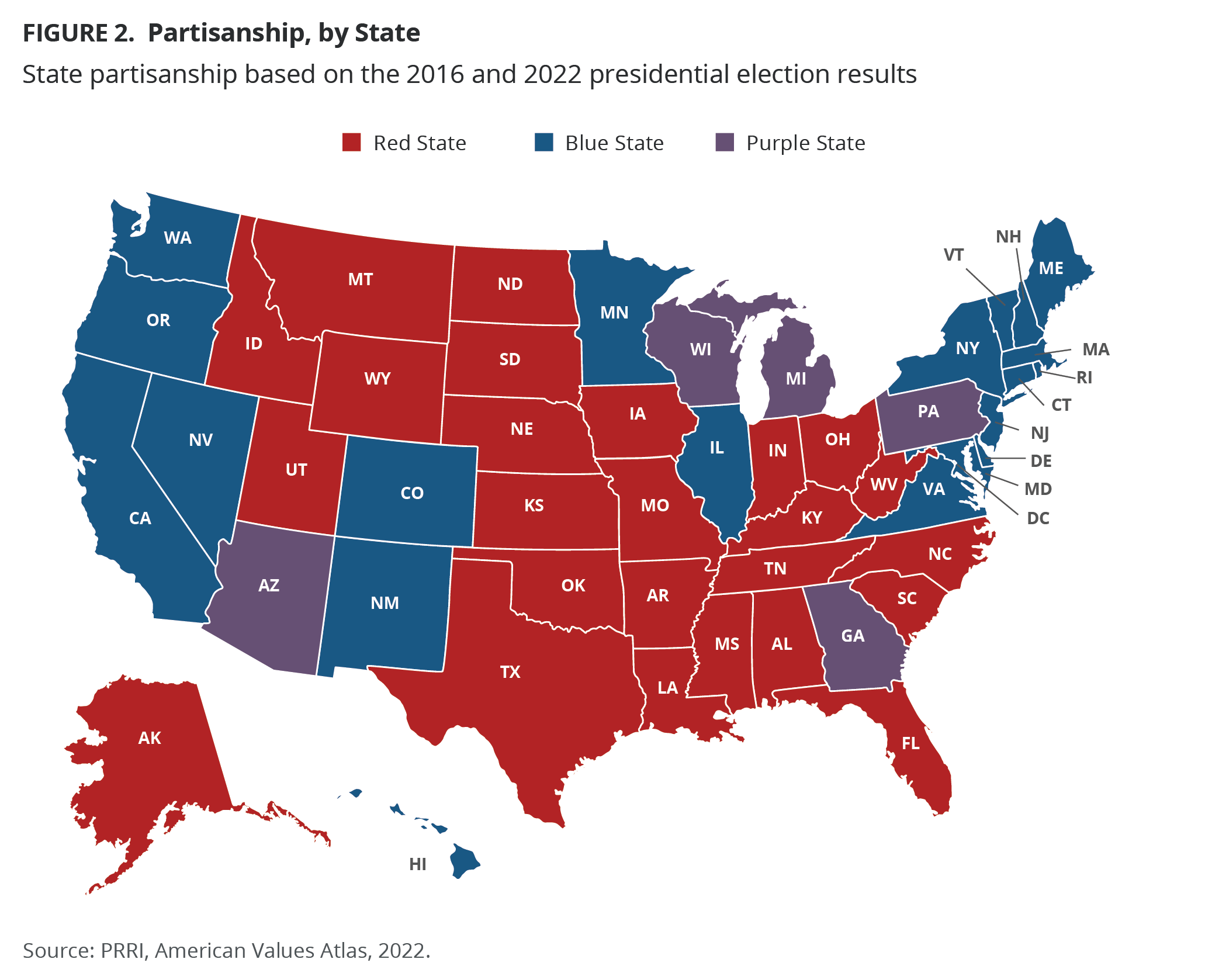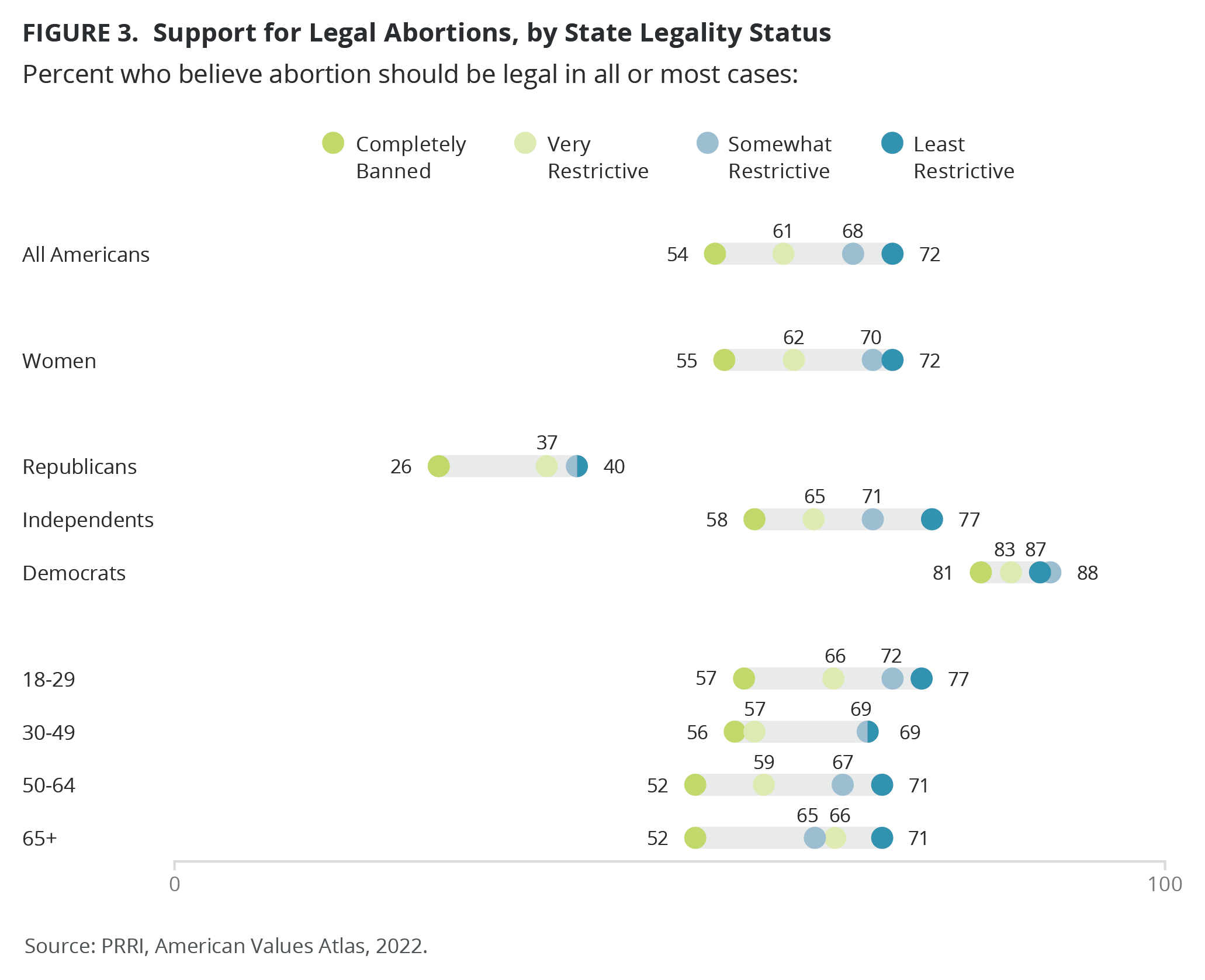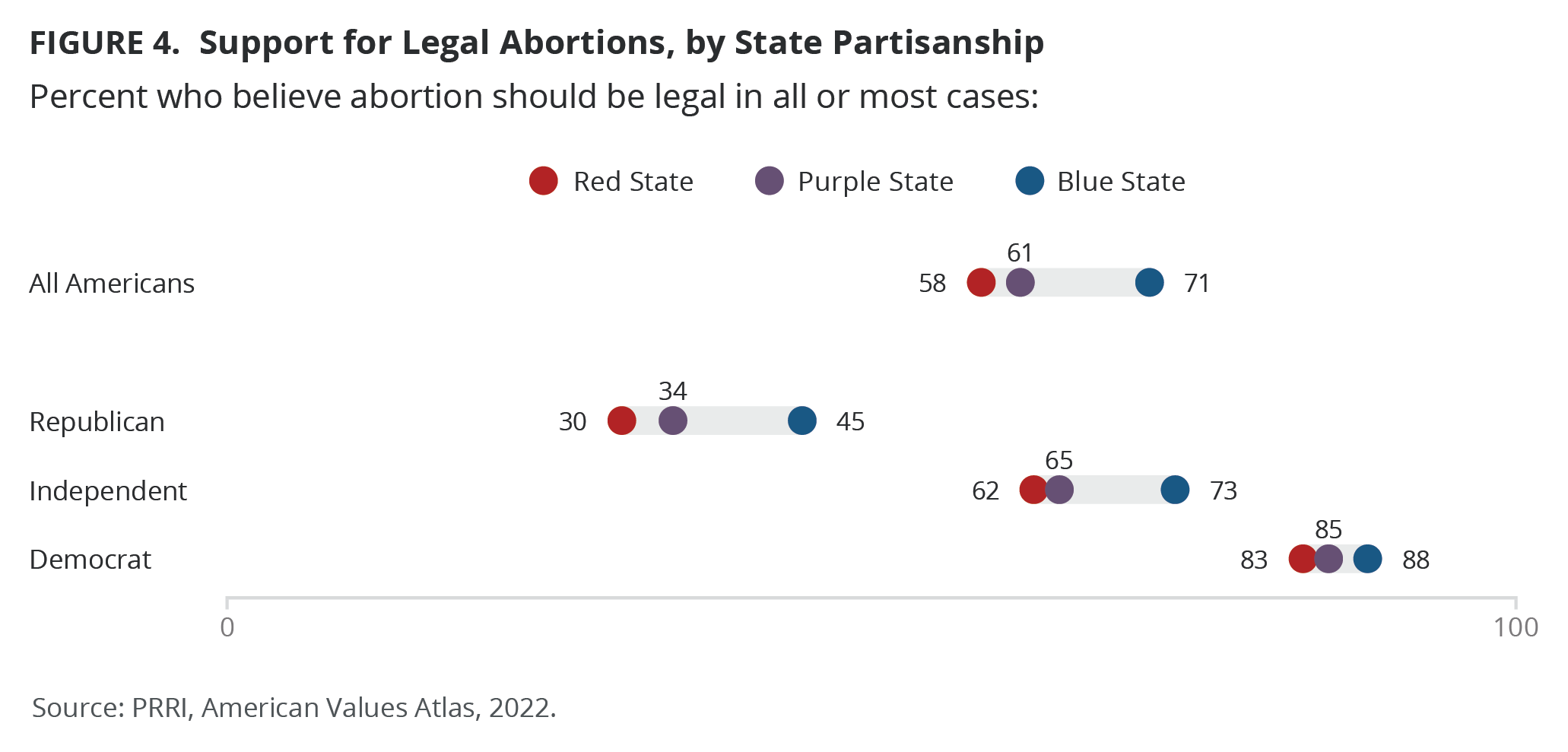On Aug. 2, 2022, nearly six in ten voters in Kansas (59%) rejected the “Value Them Both Amendment,” which would have changed the state’s constitution to state that Kansas does not recognize any legal right to abortion. Despite the majority of voters rejecting the amendment, Republicans in the state legislature, who hold a super-majority of the House, have introduced bills to restrict or ban abortion. Kansas is not unique in this regard. In 2023 alone, 21 states have had abortion restrictions or bans introduced in their legislatures. At the same time, in the wake of the 2022 U.S. Supreme Court decision in Dobbs v. Jackson Women’s Health Organization, which overturned Roe v. Wade and revoked federal recognition of a right to abortion, 20 states have passed protections for abortion, and most states have kept abortion legal at least until viability, which is typically considered to be at 24–26 weeks of pregnancy.[1]
Nearly two-thirds of all Americans (64%) believe that abortion should be legal in all or most cases. And majorities in all but seven states say the same. But since laws vary widely between states, it is worth considering whether public opinion on this issue is consistent across states with similar levels of legal restriction on abortion. We can answer this by dividing states into four groups based on the legal status of abortion: completely banned, very restrictive, somewhat restrictive, and least restrictive. The grouping is solely based on the gestational limitations for abortions in the state.[2]

Within each of the four state groups, a majority of Americans agree that abortion should be legal in most or all cases. In states where abortion is completely banned, 54% of people believe it should be legal in all or most cases, and support for legal abortion only increases in each more permissive state classification. In states where abortion is very restrictive, around six in ten Americans (61%) support legal abortion in all or most cases, as do approximately seven in ten people in states belonging to the somewhat-restrictive and least-restrictive groups (68% and 72%, respectively).
Looking at further breakdowns, a similar majority of women in all four state categories support abortion legality. By partisanship, Republicans are the only group in which there is not majority support for legal abortion in any of the state classifications. Meanwhile, majorities of independents and Democrats in each state group believe abortion should be legal in most or all cases. Also, in all state categories, majorities of Americans in all age groups believe in maintaining abortion legality.

A majority of Americans (63%) oppose the overturn of Roe v. Wade. In states where abortion is completely banned or very restricted, around six in ten Americans oppose the Roe overturn (57% and 61%, respectively). In states where abortion is somewhat restricted or is subject to the least restrictions, opposition is somewhat higher (66% and 65%, respectively).
Abortion is a highly partisan issue, so we also want to look at how views on abortion legality correlate to the partisan tendencies of the states. We categorize the states as red, blue, or purple based on the Electoral College results of past presidential elections. Red states voted Republican and blue states voted Democratic in the 2016 and 2020 presidential elections. Purple states switched from red to blue or blue to red between 2016 and 2020.

Around six in ten Americans in red and purple states (58% and 61%, respectively) and more than seven in ten Americans in blue states (71%) believe abortion should be legal in all or most cases. As with the partisan breakdown when states are categorized by their level of restriction on abortion, less than a majority of Republicans in states of all three partisanship categories support abortion legality, while a majority of independents and the vast majority of Democrats support it across all three categories. Majorities in all three state categories also oppose the overturn of Roe (59% in red states, 62% in purple states, and 68% in blue states).

[1] https://www.nytimes.com/interactive/2022/us/abortion-laws-roe-v-wade.html
[2] https://states.guttmacher.org/policies/abortion-policies